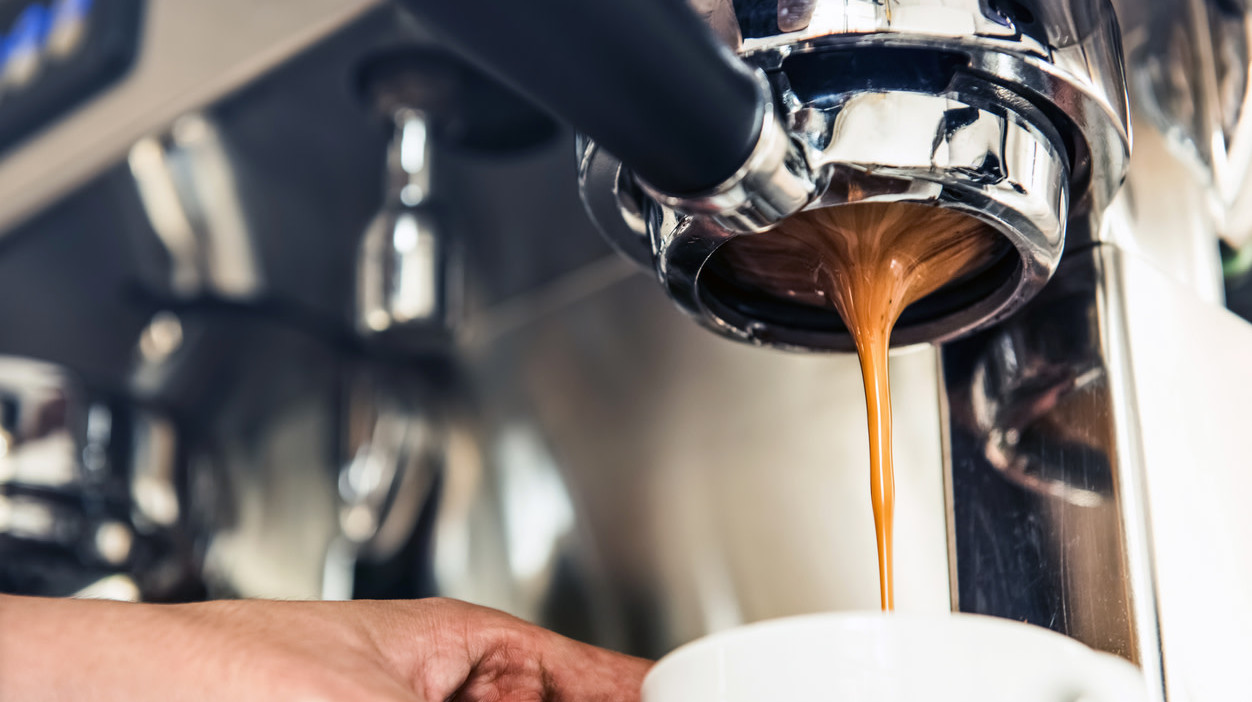Heroic Mathematicians Discover A Better Way To Brew Coffee
The rules of mathematics are constant, and they will always guide mankind to its greatest accomplishments, from the building of the Great Pyramid of Giza, to putting a man on the moon, to finally brewing the perfect shot of espresso.
A crackerjack team of mathematicians set out to solve the problem of inconsistent coffee and have at last published their results in Cell: "Systematically Improving Espresso: Insights from Mathematical Modeling and Experiment." The impetus for this study, remarkably, was not the coffee dependence mathematicians are notorious for, as caffeine aids the cognitive function required to make sense of whatever that mess of numbers is in the report (though I cannot remember enough AP math to understand a lick of their formulation, it does look quite impressive). Rather, this study was inspired by the greatest challenge of our time: climate change and the pursuit of sustainability.
The threat climate change poses to coffee production has been well documented, and the global coffee supply is shrinking. The industry will either be forced to significantly raise prices or learn to do more with less, without sacrificing quality. The mathematicians sought to solve this problem by analyzing every variable in the coffee making process (such as water pressure and particle size), as well the extreme variability that exists within the coffee itself (the degree of the roast; the evaporation of volatile gases as it ages; the fact that there are close to 2,000 different compounds extracted from ground coffee). They chose to focus their research on espresso not only for its popularity but also because it's "most susceptible to variation in quality," an assertion that can be emphatically supported by anyone who has tasted espresso from Dunkin'.
Once the data was gathered, they proceeded to do some fancy math stuff with it. Again, I don't remember any of this from high school. There are some symbols that look like pitchforks, a bunch of upside down triangles, the letter N wearing a party hat. Their formulations considered the fact that coffee tastes best when "the proportion of extracted dry mass is in the range 17%–23%." The report goes on to explain, "Coffee beverages with EYs [extraction yields] exceeding 23% typically taste bitter, while those below 17% are often sour," yet another thing that I didn't know, nor have I even once before this very moment considered. We do not give mathematicians enough praise for the wonderful things they do for us, so if you can, go hug one today.
The mathematicians discovered a new method for brewing espresso—or, as they put it, "the formulation of a novel model for extraction (i.e., mass transfer) from a granular bed composed of mixed particle sizes to a liquid that flows through this bed"—that reduced the amount of grounds needed by 25%. They then collaborated with Frisky Goat Espresso in Eugene, Oregon to implement the new "waste reduction protocol" in a commercial setting. In one year, Frisky Goat cafe served 27,850 espresso-containing beverages, and thanks to the new method saving them $0.13 per drink, they showed a revenue increase of $3,620. Additionally, the amount of time needed to pull a shot of espresso dropped from 20-30 seconds to a mere 14 seconds, meaning baristas can work even faster, and if they can't keep up, a robot can... and will.
Applying these results to yet another mathematical model (these people just can't stop!), the mathematicians believe their protocol could lead to the coffee industry saving $3.1 million per day. For those of us who prefer our math done by others, that's an annual revenue increase of $1.1 billion. For an industry currently worth more than $36 billion, that's not too shabby. And considering that valuation is predicted to grow to $83.5 billion in the next five years (that's almost 232% you're welcome), maybe the world's coffee tycoons should give these mathematicians a call.
